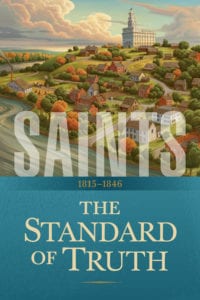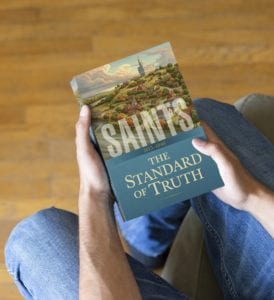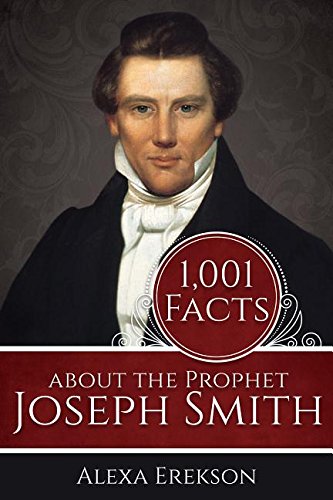Podcast: Download (49.0MB)
Subscribe: RSS
This podcast series features past FairMormon Conference presentations. In celebration of the release of the Facsimile Edition of the Joseph Smith Papers Revelations and Translations Vol. 4: Book of Abraham and Related Manuscripts, this episode is a presentation from our conference earlier this year. If you would like to watch all the presentations from the 2018 conference, you can still purchase video streaming. You can also buy John Gee’s latest book, An Introduction to the Book of Abraham, at a discount from our bookstore.
John Gee, Selling Our Birthright for a Mess of Pottage: The Historical Authenticity of the Book of Abraham
Transcript available here.

John Gee is a Senior Research Fellow, and the William (Bill) Gay Research Professor at the Maxwell Institute. He is the editor of eight books and has edited a peer-reviewed international Egyptological journal. He has published over eighty articles and one book. He has served on the board of trustees of national and international organizations.
Audio and Video Copyright © 2018 The Foundation for Apologetic Information and Research, Inc. Any reproduction or transcription of this material without prior express written permission is prohibited.
 Tyler J. Griffin was born and raised in Providence, Utah in the beautiful Cache Valley. After serving a mission in Brazil Curitiba, he returned home and completed a Bachelor’s degree in Electrical/Computer Engineering. He married Kiplin Crook and began teaching seminary in Brigham City, Utah. After six years in that assignment, he transferred to the Institute adjacent to Utah State University where he worked for the next seven years. One of his assignments there was working in the Seminary Preservice program (teaching and training potential seminary teachers) for four years. He also developed an online home study seminary program. His masters and doctorate degrees are both in Instructional Technology. He and his wife have 10 children (5 boys and 5 girls). He has been at BYU since August 2010.
Tyler J. Griffin was born and raised in Providence, Utah in the beautiful Cache Valley. After serving a mission in Brazil Curitiba, he returned home and completed a Bachelor’s degree in Electrical/Computer Engineering. He married Kiplin Crook and began teaching seminary in Brigham City, Utah. After six years in that assignment, he transferred to the Institute adjacent to Utah State University where he worked for the next seven years. One of his assignments there was working in the Seminary Preservice program (teaching and training potential seminary teachers) for four years. He also developed an online home study seminary program. His masters and doctorate degrees are both in Instructional Technology. He and his wife have 10 children (5 boys and 5 girls). He has been at BYU since August 2010. Scott Gordon is president of FairMormon and as such has been a writer of several articles and a speaker at firesides. He has a master’s degree in Business Administration from Brigham Young University with a bachelor’s in Organizational Communication. He has held many Church callings, including Bishop, and currently serves as the Ward Mission Leader. He is married to Sheri Farnsworth Gordon and has five children.
Scott Gordon is president of FairMormon and as such has been a writer of several articles and a speaker at firesides. He has a master’s degree in Business Administration from Brigham Young University with a bachelor’s in Organizational Communication. He has held many Church callings, including Bishop, and currently serves as the Ward Mission Leader. He is married to Sheri Farnsworth Gordon and has five children.

 This podcast series features past FairMormon Conference presentations. This is a special episode that contains the second of two presentations given at our conference earlier this month about the new book series being published by the Church, Saints: The Story of the Church of Jesus Christ in the Latter Days. The first volume will be released on Tuesday, September 4. (If you would like to watch the video of this and the other presentations from the 2018 conference, you can still purchase
This podcast series features past FairMormon Conference presentations. This is a special episode that contains the second of two presentations given at our conference earlier this month about the new book series being published by the Church, Saints: The Story of the Church of Jesus Christ in the Latter Days. The first volume will be released on Tuesday, September 4. (If you would like to watch the video of this and the other presentations from the 2018 conference, you can still purchase  Steven C. Harper is a historian for the Church of Jesus Christ of Latter-day Saints who has served as an editor of The Joseph Smith Papers, working on volumes in the Documents series and the Revelations and Translations series. He taught religion at BYU from 2002 to 2012 and religion and history at BYU–Hawaii from 2000 to 2001. He earned his PhD in early American history from Lehigh University in Bethlehem, Pennsylvania. He is the author of Joseph Smith’s First Vision: A Guide to the Historical Accounts (2012), Making Sense of the Doctrine and Covenants (2008), and Promised Land: Penn’s Holy Experiment, the Walking Purchase, and the Dispossession of Delawares 1600–1763 (2006), as well as multiple published articles on early Mormonism and the early American republic. Two of these were awarded the T. Edgar Lyon and Juanita Brooks awards by the Mormon History Association.
Steven C. Harper is a historian for the Church of Jesus Christ of Latter-day Saints who has served as an editor of The Joseph Smith Papers, working on volumes in the Documents series and the Revelations and Translations series. He taught religion at BYU from 2002 to 2012 and religion and history at BYU–Hawaii from 2000 to 2001. He earned his PhD in early American history from Lehigh University in Bethlehem, Pennsylvania. He is the author of Joseph Smith’s First Vision: A Guide to the Historical Accounts (2012), Making Sense of the Doctrine and Covenants (2008), and Promised Land: Penn’s Holy Experiment, the Walking Purchase, and the Dispossession of Delawares 1600–1763 (2006), as well as multiple published articles on early Mormonism and the early American republic. Two of these were awarded the T. Edgar Lyon and Juanita Brooks awards by the Mormon History Association. Scott A. Hales has been a historian/writer for the Church History Department since 2015. He currently works as a writer and story editor for Saints: The Story of the Church of Jesus Christ in the Latter Days, the new four-volume narrative history of the Church. He has a BA in English from Brigham Young University and an MA and PhD in American Literature from the University of Cincinnati. He has published scholarly articles on Mormon and American literature in several academic journals, including Religion and the Arts and The Journal of Transnational American Studies. He currently lives in Eagle Mountain, UT with his wife and five children.
Scott A. Hales has been a historian/writer for the Church History Department since 2015. He currently works as a writer and story editor for Saints: The Story of the Church of Jesus Christ in the Latter Days, the new four-volume narrative history of the Church. He has a BA in English from Brigham Young University and an MA and PhD in American Literature from the University of Cincinnati. He has published scholarly articles on Mormon and American literature in several academic journals, including Religion and the Arts and The Journal of Transnational American Studies. He currently lives in Eagle Mountain, UT with his wife and five children.
 Scott is the Executive Director of the Rollins Center for Entrepreneurship & Technology at BYU. Under his leadership the program has been ranked in the top five of all collegiate entrepreneurship programs for each of the past seven years, ranking #2 in 2016. He is also the Founder and Chairman of Omadi, Inc., a venture backed SaaS mobile CRM platform for workforce management, serving the towing/transportation markets. Scott is a long time entrepreneur having co-founded or partnered in building seven companies (harvesting four), including several current ventures. Additionally, he serves on several business and private foundation boards. In 2005, Scott published a significant work, titled Where Have All The Prophets Gone?, a historical, theological book on early Christianity using the Bible, the Pseudepigrapha, the Apocrypha, the Dead Seas Scrolls, the Nag Hammadi Library, and all of the extant early Christian writings. In 2014 Scott published his second book, Do the Mormons Have a Leg to Stand On?: a Critical Look at LDS Doctrines in the Light of the Bible and the Teachings of the Early Christian Church. Scott and his wife Marilyn are the parents of 5 married children and they have 15 grandchildren. Scott serves as Stake President of the Provo Utah YSA 4th Stake.
Scott is the Executive Director of the Rollins Center for Entrepreneurship & Technology at BYU. Under his leadership the program has been ranked in the top five of all collegiate entrepreneurship programs for each of the past seven years, ranking #2 in 2016. He is also the Founder and Chairman of Omadi, Inc., a venture backed SaaS mobile CRM platform for workforce management, serving the towing/transportation markets. Scott is a long time entrepreneur having co-founded or partnered in building seven companies (harvesting four), including several current ventures. Additionally, he serves on several business and private foundation boards. In 2005, Scott published a significant work, titled Where Have All The Prophets Gone?, a historical, theological book on early Christianity using the Bible, the Pseudepigrapha, the Apocrypha, the Dead Seas Scrolls, the Nag Hammadi Library, and all of the extant early Christian writings. In 2014 Scott published his second book, Do the Mormons Have a Leg to Stand On?: a Critical Look at LDS Doctrines in the Light of the Bible and the Teachings of the Early Christian Church. Scott and his wife Marilyn are the parents of 5 married children and they have 15 grandchildren. Scott serves as Stake President of the Provo Utah YSA 4th Stake. Michael R. Ash is the author of Shaken Faith Syndrome: Strengthening One’s Testimony in the Face of Criticism and Doubt, Of Faith Reason: 80 Evidences Supporting the Prophet Joseph Smith, as well as Bamboozled by the “CES Letter.” A former columnist for the Deseret News’ Mormon Times, he has also been a frequent contributor to the online blogs, Meridian Magazine, as well as the Mormon Hub. Mike has been published in the Ensign, Sunstone Magazine, Dialogue: A Journal of Mormon Thought, in the FARMS Review, and most recently contributed a chapter to Kofford Book’s Perspectives in Mormon Theology: Apologetics. Joining FairMormon in the year 2000, Mike delivered a paper at the 2nd annual FairMormon conference and has contributed papers to seven additional conferences (including this one) since. Mike and his wife Chris live in Ogden and are the parents of three daughters and the grandparents of six grandchildren.
Michael R. Ash is the author of Shaken Faith Syndrome: Strengthening One’s Testimony in the Face of Criticism and Doubt, Of Faith Reason: 80 Evidences Supporting the Prophet Joseph Smith, as well as Bamboozled by the “CES Letter.” A former columnist for the Deseret News’ Mormon Times, he has also been a frequent contributor to the online blogs, Meridian Magazine, as well as the Mormon Hub. Mike has been published in the Ensign, Sunstone Magazine, Dialogue: A Journal of Mormon Thought, in the FARMS Review, and most recently contributed a chapter to Kofford Book’s Perspectives in Mormon Theology: Apologetics. Joining FairMormon in the year 2000, Mike delivered a paper at the 2nd annual FairMormon conference and has contributed papers to seven additional conferences (including this one) since. Mike and his wife Chris live in Ogden and are the parents of three daughters and the grandparents of six grandchildren.